The Big Data technology infographic in PowerPoint format includes five slides. Firstly we explore the five main Characteristics of BigData. Then what is the relationship between Bigdata and Internet of Things (IoT)? What is the difference between Cyber-physical Systems (CPS) and Internet of Things (IoT)? Finally is the diagram of 5C Architecture of Big-Data for Manufacturing Applications, together with the technologies applied for Bigdata. As the same series, you can also find our Data Mining, Cloud platform, Machine Learning, Internet of Things, Artificial Intelligence, Industry 4.0 and BlockChain, Digital marketing PowerPoint templates.
Slide 1, 4V Characteristics of Big-Data
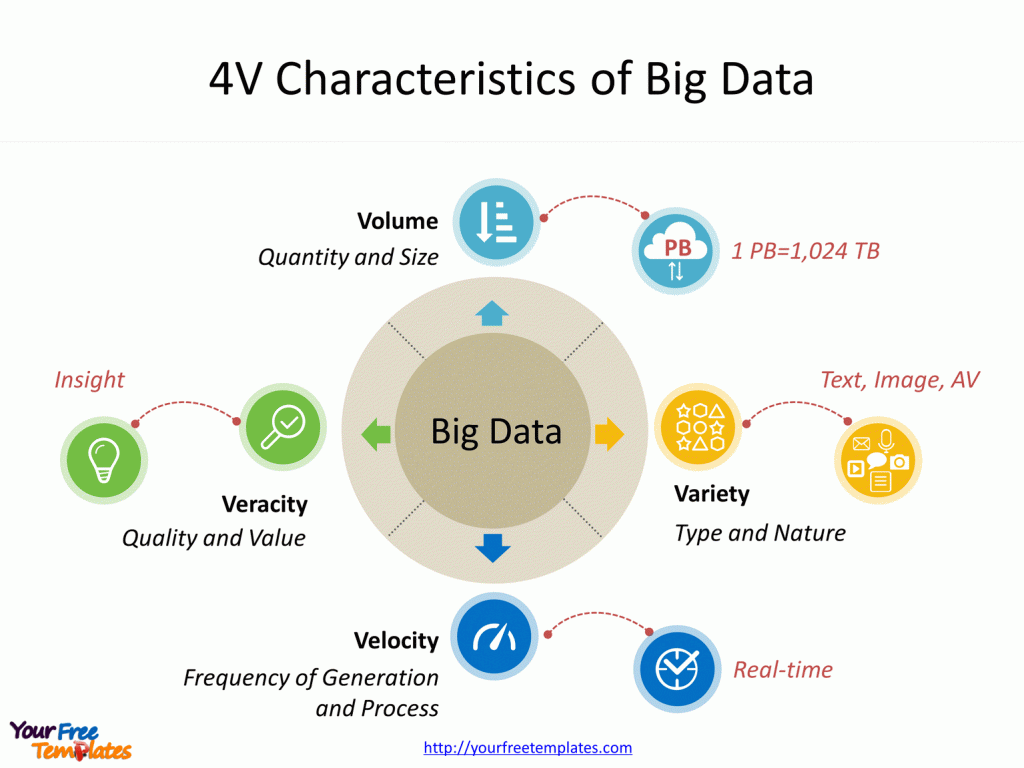
The four V Characteristics of BigData are known to the public from the beginning when BigData has become a buzz word. Volume is the first thing to be mentioned as the obvious characteristic. Now it is common to have PB level data, which is equal to 1024 TB, whereas one TB is equal to 1024 GB. Since the data is quite big so it can be only stored in servers. Secondly you can expect variety as the important feature, as you are now surrounding by the media ocean with not only text, image but also audio and video. The data could be structural or semi even unstructured, from email, comments, likes to short messages, blogs with multiple Medias. Thirdly Velocity has become prominent as this characteristic has made bigdata very different from the traditional data. The real-time conclusion is required for processing bigdata and immediate action is needed based on the findings from bigdata stream. Last but not least is the Veracity characteristic, it is the ultimate purpose of big data application. What is the value we can get after deploying the big data applications?
Slide 2, Big Data and Internet of Things (IoT)
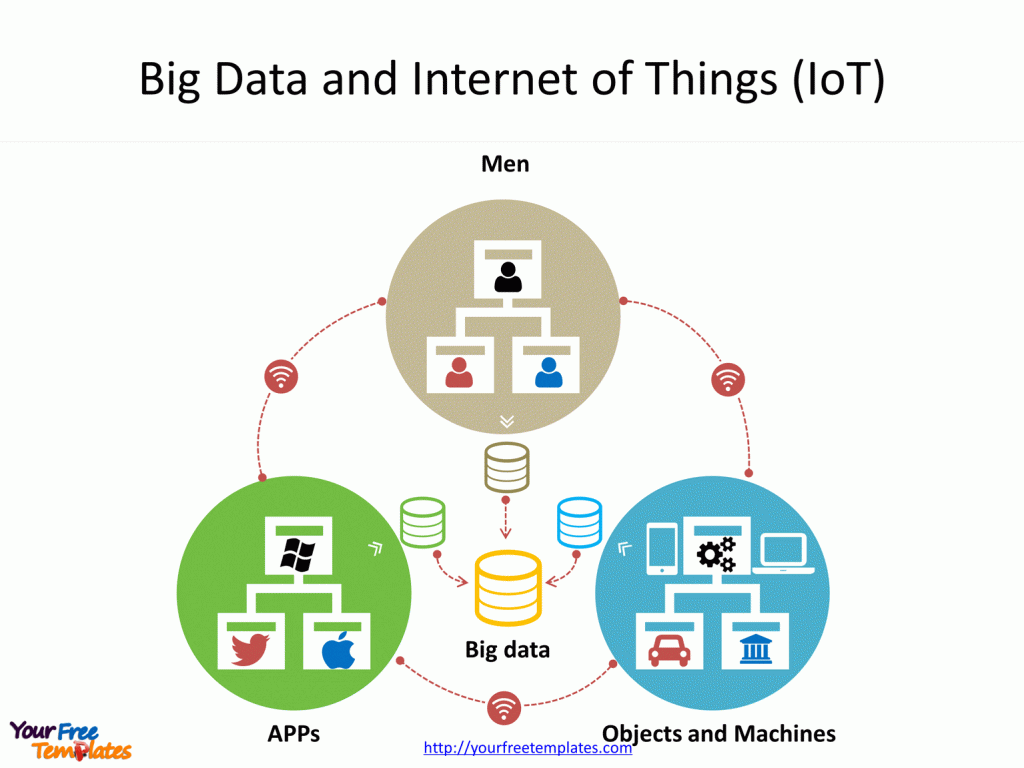
In our world, human beings are connected with all kind of objects/machines include mobile phones, automobiles, houses, and home appliances, every platforms with a variety of apps. This constitutes the actual Internet of Things (IoT). Meanwhile Data is generated through their internal cycles and among the three different groups. Nowadays we have experienced the big data stream from social media platforms, and search engines. In the future it is forecasted to generate more big data as more and more sensors embedded in objects or machines, extensive applications developed in various platforms.
Slide 3, Cyber-physical Systems (CPS) and Internet of Things (IoT)
From Wikipedia, the definition of cyber-physical system (CPS) is a system in which a mechanism is controlled or monitored by computer-based algorithms. This is something similar to Internet of Things (IoT). So what is the real difference between them? Both of them have covered the network, Internet and the sensors to form the system. However Internet of Things doesn’t have external intervention into the running of the network, while cyber-physical system boasts the advanced analytic tools to convert data into knowledge, then into insights based on historical data analysis. In a word, the IoT has laid the fundamentals for Cyber-physical Systems (CPS) , making CPS to generate high-valued insights possibly.
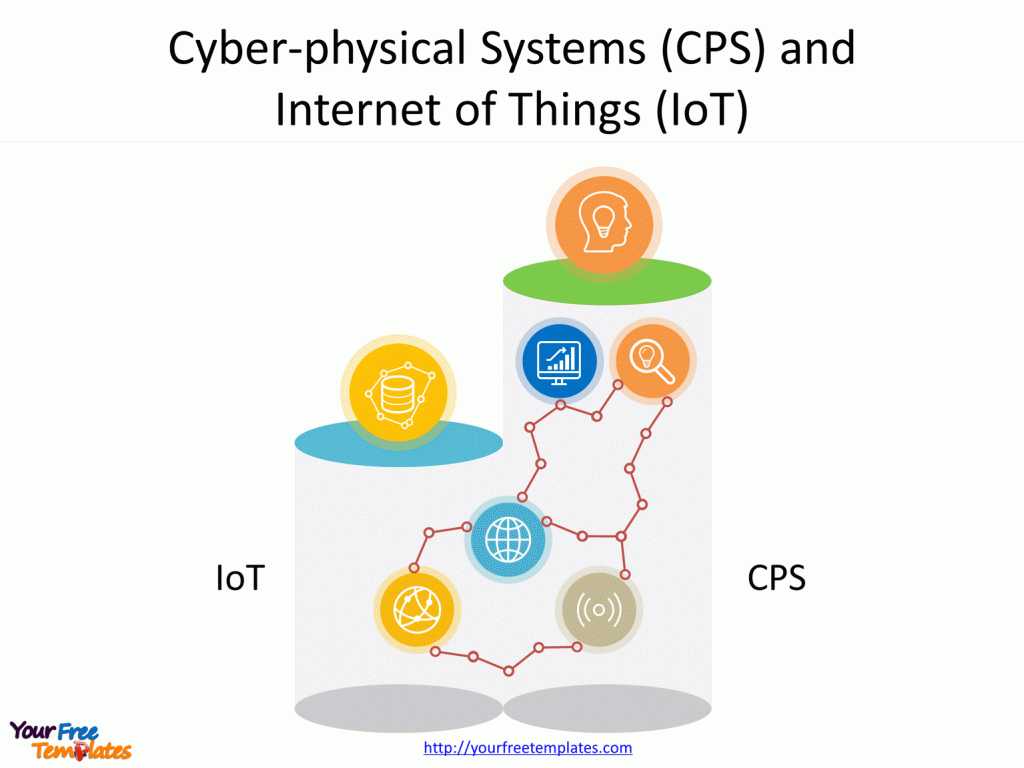
Slide 4, 5C Architecture of BigData for Manufacturing Applications
For the time being, Cyber-physical Systems (CPS) has not yet developed to its full potential in manufacturing industry. There still has a long way to go before leveraging the insight from data gathered. The first level is connection which is now under way for data collected. When thinking of converting the data into knowledge, the second phase is coming. Thirdly you can expect the cyber to recognize the patterns from deep-learning. In a more advanced level of cognition, the most valuable part is to forecast through online monitoring. Finally the highest level of CPS is configuration, which Informed decisions made to increase the efficiency of machines or effectiveness of assets.
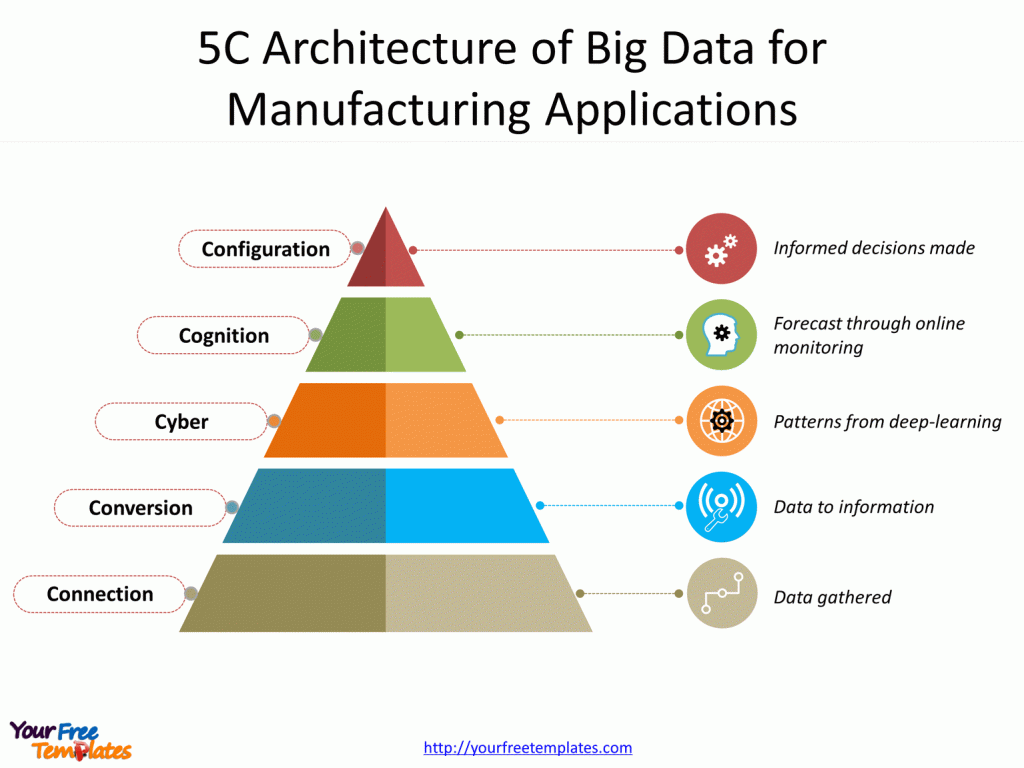
Slide 5, Technologies of Big Data
There are three kinds of technologies applied in Big Data. The first technology is used for analyzing the Bigdata, covering A/B testing, machine learning and natural language processing etc. Then the next kind is Bigdata technologies, such as business intelligence (BI), cloud computing and databases, which could be descripted as fundamentals. Another realm of Bigdata technology is from the perspective of visualization, how to present the insight from huge volume of data instantly and effectively?
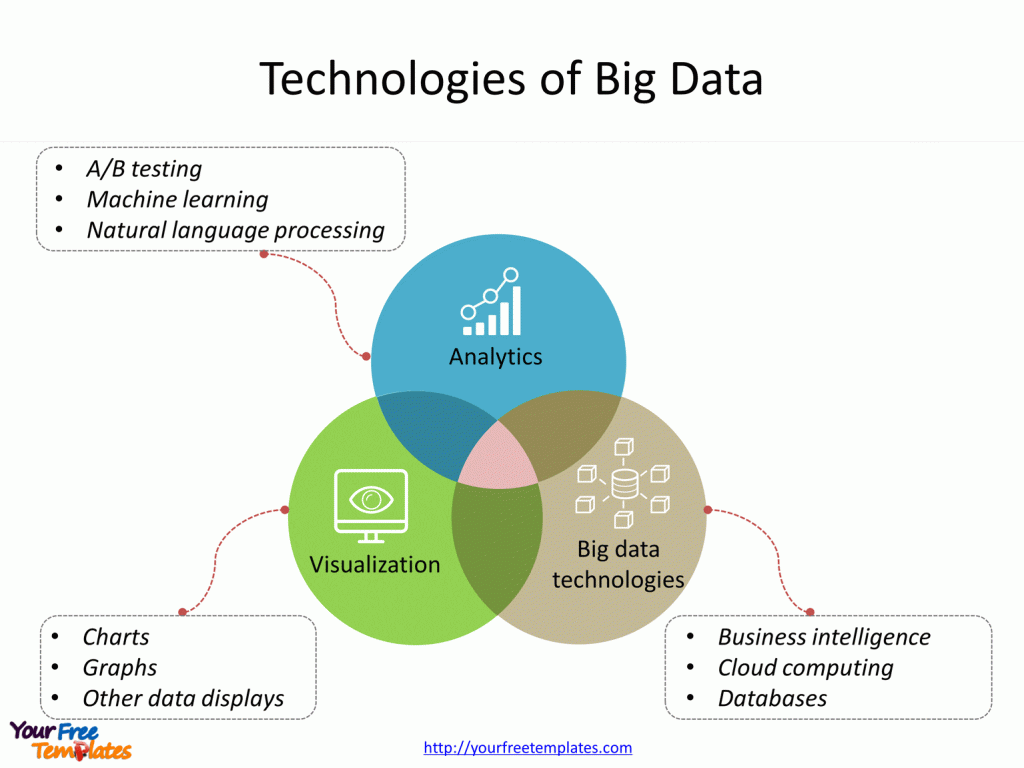
For detailed info on it, please refer to Wikipedia.
Size:300K
Type: PPTX
[sociallocker]Aspect Ratio: Standard 4:3
Click the blue button to download it.
Download the 4:3 Template
Aspect Ratio: Widescreen 16:9
Click the green button to download it.
Download the 16:9 Template[/sociallocker]














